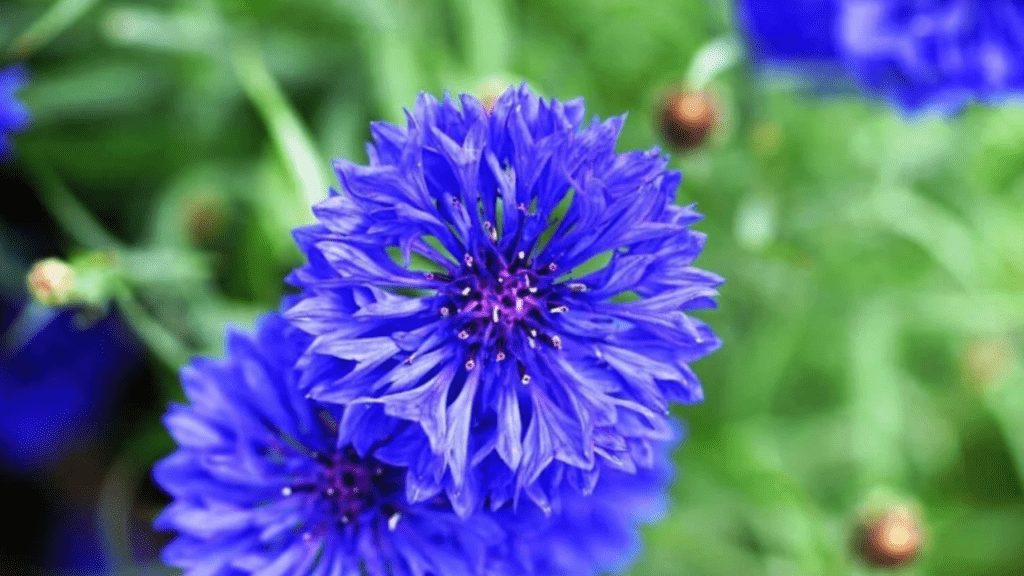
How to Grow and Care for Tiny Blue Flowers: A Gardener’s Guide
Are you tired of struggling to grow and care for tiny blue flowers in your garden? Look no further! In this comprehensive guide, we will provide expert tips and advice for all gardening enthusiasts, whether you’re a beginner or an experienced gardener. You deserve to have a beautiful garden filled with stunning blue flowers, and we’re here to help you achieve that. So let’s dive in and learn how to grow and care for these delicate blooms with ease. Your garden will thank you!
Table of Contents
ToggleThe Allure of Tiny Blue Flowers
is undeniable. Their delicate beauty and vibrant color add a touch of elegance and charm to any garden. However, many gardeners struggle with growing and caring for these tiny blue flowers. But fear not, because with the right knowledge and techniques, you can easily cultivate a stunning display of these beautiful blooms in your own garden.
To start, it’s important to choose the right location for your tiny blue flowers. These flowers thrive in well-drained soil and prefer a location with plenty of sunlight. Make sure to prepare the soil by adding organic matter and compost to provide the nutrients the plants need to flourish.
When it comes to watering, it’s crucial to maintain a consistent watering schedule for your tiny blue flowers. Avoid overwatering, as this can lead to root rot, but be mindful of dry spells and make sure to water your plants regularly, especially during hot summer months.
In terms of care, regular pruning and deadheading can help promote healthy growth and prolong the blooming period of your tiny blue flowers. Additionally, keeping an eye out for pests and diseases is important to ensure the health and vitality of your plants.
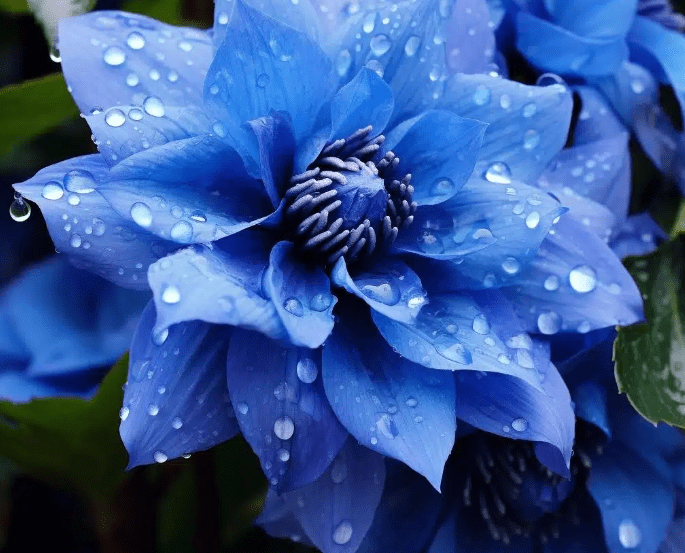
By following these expert tips and techniques, you can successfully grow and care for tiny blue flowers in your garden. With a little patience and dedication, you can create a stunning display of these captivating blooms that will surely enhance the beauty of your outdoor space. So go ahead, embrace the allure of tiny blue flowers and take your gardening skills to the next level!
Popular Varieties of Tiny Blue Flowers
Forget-Me-Nots (Myosotis)
Description, growing conditions, and care tips
Forget-Me-Nots, also known as Myosotis, are beautiful tiny blue flowers that can add a pop of color to your garden. These delicate flowers prefer partial shade and moist, well-drained soil. When it comes to watering, it’s crucial to maintain a consistent schedule to avoid overwatering and root rot. Regular pruning and deadheading can help promote healthy growth and prolong the blooming period. Keep an eye out for pests and diseases to ensure the health of your plants. With a little patience and dedication, you can successfully grow and care for these captivating blooms in your garden. Embrace the allure of tiny blue flowers and enhance the beauty of your outdoor space with these expert tips and techniques.
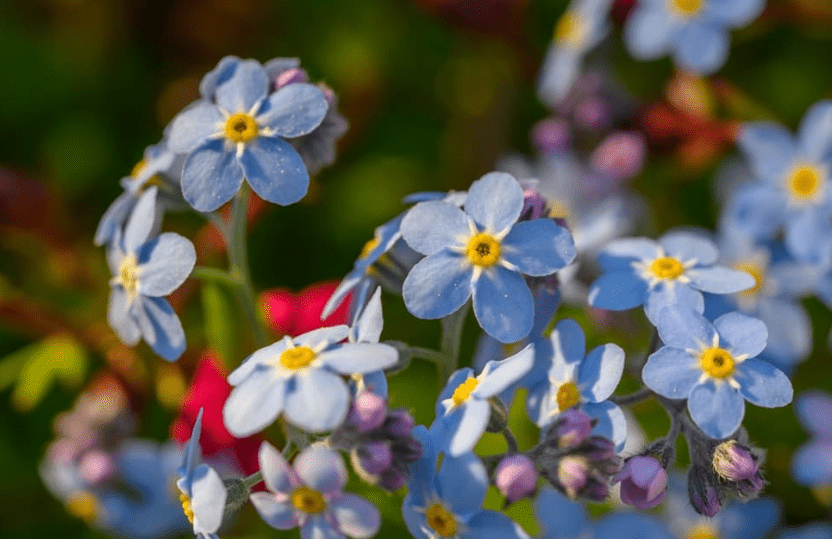
Lobelia (Lobelia erinus)
Overview, ideal planting conditions, and maintenance.
Lobelia, also known as Lobelia erinus, is another popular variety of tiny blue flowers that can bring a touch of elegance to your garden. These vibrant flowers thrive in full sun to partial shade and well-draining soil. It’s important to water them regularly, especially during hot and dry periods, to keep the soil consistently moist. Regular fertilization can help promote healthy growth and abundant blooms. Additionally, deadheading can encourage continuous flowering and maintain the overall appearance of the plant. Keep an eye out for common pests and diseases, and take proactive measures to protect your lobelia. With proper care and attention, you can enjoy the stunning beauty of these tiny blue flowers throughout the growing season. Planting and maintaining these captivating blooms will not only enhance the visual appeal of your garden, but also bring a sense of joy and tranquility to your outdoor space. Embrace the beauty of tiny blue flowers and create a breathtaking garden that will be the envy of your neighborhood.
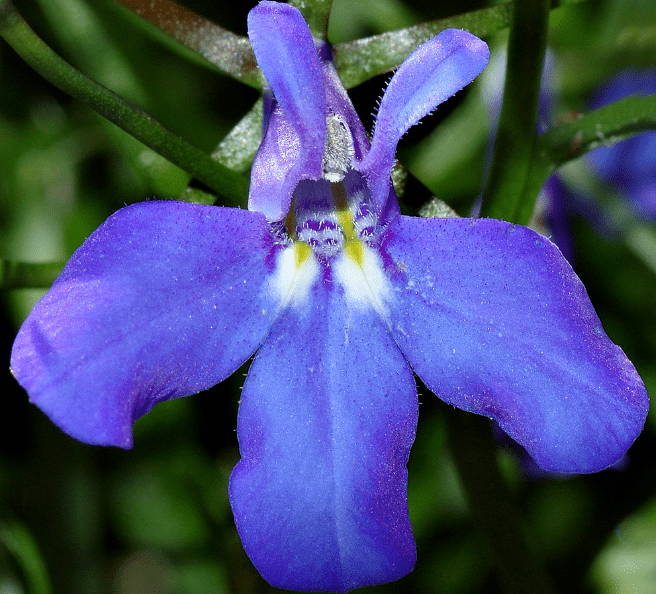
Baby Blue Eyes (Nemophila menziesii)
Features, planting guide, and seasonal care.
Baby Blue Eyes (Nemophila menziesii) is a stunning and delicate flower that can bring an enchanting touch to your garden. When planting these beautiful blooms, it’s important to follow a few key guidelines to ensure their health and vibrancy. Make sure to choose a location with well-drained soil and partial shade, as too much sun can cause the flowers to wilt. When watering, be sure to keep the soil consistently moist, especially during hot and dry periods. Additionally, regular fertilization can help promote healthy growth and abundant blooms. To encourage continuous flowering, make sure to deadhead the flowers as needed. Keep an eye out for common pests and diseases, and take proactive measures to protect your lobelia. With proper care and attention, you can enjoy the stunning beauty of these tiny blue flowers throughout the growing season.
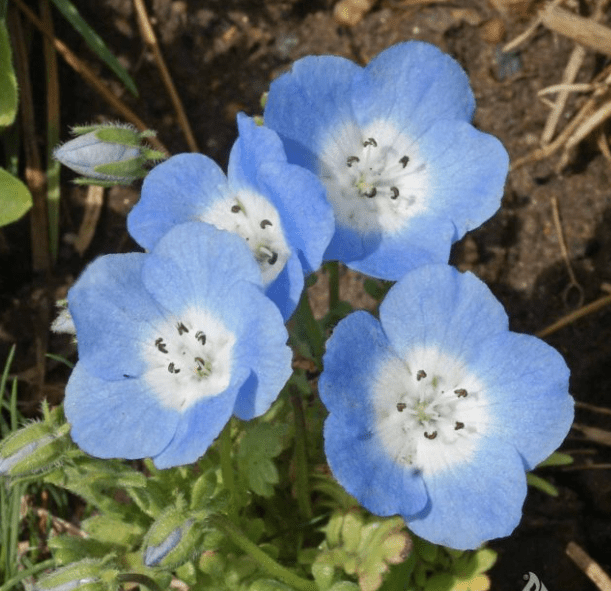
By following the proper planting and care guidelines, you can create a breathtaking garden that will be the envy of your neighborhood. Embrace the beauty of Baby Blue Eyes and experience the joy and tranquility that these captivating blooms can bring to your outdoor space.
Blue Star Creeper (Isotoma fluviatilis)
Characteristics, growth habits, and care instructions.
Blue Star Creeper, also known as Isotoma fluviatilis, is a low-growing perennial plant with delicate, star-shaped blue flowers. This ground cover is easy to care for and can thrive in a variety of growing conditions. With its spreading, mat-forming growth habit, Blue Star Creeper is an excellent choice for filling in empty spaces in your garden or creating a lush carpet of blue blooms. When it comes to care, Blue Star Creeper prefers well-drained soil and partial to full sun. It is important to water the plant regularly, keeping the soil consistently moist, especially during hot and dry periods. Fertilizing the plant can help promote healthy growth and abundant blooms, and deadheading the flowers as needed can encourage continuous flowering. Keep an eye out for common pests and diseases, and take proactive measures to protect your Blue Star Creeper. With the proper planting and care guidelines, you can create a stunning garden that will be the envy of your neighborhood. Embrace the beauty of Blue Star Creeper and enjoy the tranquility that these captivating blue blooms can bring to your outdoor space.
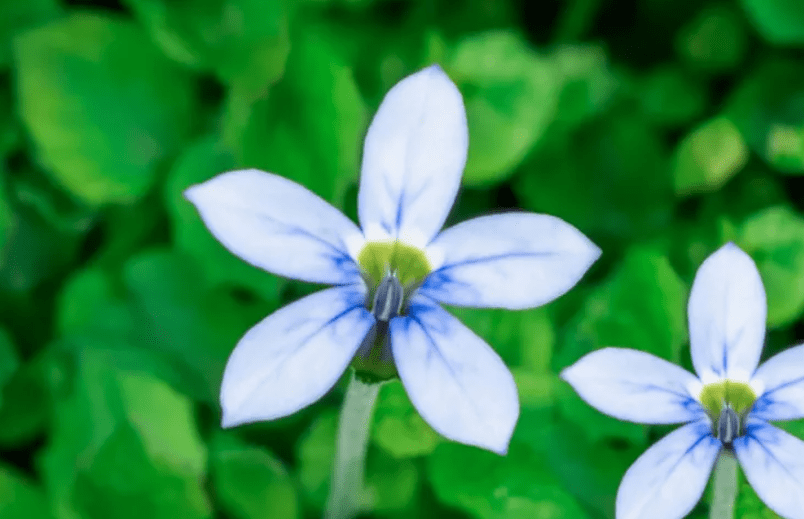
Speedwell (Veronica)
Varieties, blooming season, and how to grow.
Blue Star Creeper is a versatile and low-maintenance plant that comes in several varieties, each with its own unique characteristics. It blooms from late spring to early summer, producing delicate, star-shaped blue flowers that add a pop of color to any garden. To grow Blue Star Creeper, it is important to choose a well-drained soil and provide partial to full sun for optimal growth. Regular watering is essential, especially during hot and dry periods, to keep the soil consistently moist. Fertilizing the plant can help promote healthy growth and abundant blooms, and deadheading the flowers as needed can encourage continuous flowering. Keep an eye out for common pests and diseases, and take proactive measures to protect your Blue Star Creeper. With the proper planting and care guidelines, you can create a stunning garden that will be the envy of your neighborhood. Embrace the beauty of Blue Star Creeper and enjoy the tranquility that these captivating blue blooms can bring to your outdoor space.
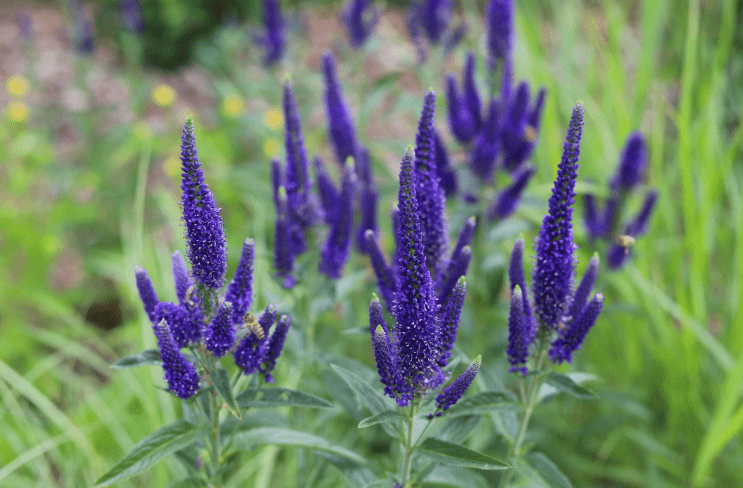
Growing Conditions for Tiny Blue Flowers
Soil Requirements
To ensure the successful growth of Blue Star Creeper, it is essential to choose a well-drained soil that provides the proper nutrients for the plant to thrive. The soil should be rich in organic matter and have good drainage to prevent waterlogging, which can lead to root rot. Additionally, it is important to provide partial to full sun for optimal growth and blooming. This will ensure that the plant receives the necessary sunlight to support healthy development.
Regular Watering: Blue Star Creeper requires consistent moisture, especially during hot and dry periods. It is important to water the plant regularly to keep the soil consistently moist, but not waterlogged. This will help support the plant’s growth and prevent wilting or dehydration.
Fertilization: Fertilizing the plant can help promote healthy growth and abundant blooms. Using a balanced fertilizer designed for flowering plants can provide the necessary nutrients to support the plant’s development. It is important to follow the recommended guidelines for fertilization to avoid overfeeding, which can be detrimental to the plant.
Pest and Disease Management: It is important to keep an eye out for common pests and diseases that may affect Blue Star Creeper. Taking proactive measures, such as using organic pest control methods and proper plant maintenance, can help protect the plant from potential threats. By addressing any pest or disease issues promptly, you can help ensure the continued health and vitality of your Blue Star Creeper.
By providing the right soil, moisture, sunlight, and care, you can create an ideal environment for Blue Star Creeper to thrive and produce its stunning blue flowers. Embrace the beauty of this plant and enjoy the tranquility it brings to your outdoor space. With the proper growing conditions and care, you can create a beautiful garden that will be the envy of your neighborhood.
Light Preferences
It is crucial to understand the light preferences of your plants in order to provide them with the best growing conditions. Blue Star Creeper, for example, thrives in partial shade to full sun, making it important to choose the right location for your plant. By placing it in an area that receives the appropriate amount of sunlight, you can ensure that your Blue Star Creeper will flourish and produce beautiful blooms. Additionally, understanding the light preferences of your plants can help you make informed decisions when planning your garden layout and choosing the right companions for your Blue Star Creeper. By prioritizing the light preferences of your plants, you can create a harmonious and thriving garden that showcases the natural beauty of each individual species. So, embrace the importance of light preferences and use this knowledge to create a stunning and vibrant outdoor space.
Watering Needs
Are crucial to the health and growth of your plants. It is important to understand the specific watering needs of each plant in your garden in order to provide them with the right amount of water. Blue Star Creeper, for example, prefers moist soil and regular watering, making it essential to monitor the moisture levels and adjust your watering schedule accordingly. Over-watering can lead to root rot, while under-watering can cause wilting and stunted growth. By paying attention to the watering needs of your plants, you can ensure that they thrive and remain healthy. Additionally, incorporating a watering schedule and using techniques such as drip irrigation or soaker hoses can help you efficiently water your garden while conserving water. By prioritizing the watering needs of your plants, you can create a lush and vibrant garden that flourishes throughout the growing season. So, take the time to understand and meet the watering needs of your plants to create a beautiful and thriving outdoor space.
Temperature and Climate Considerations
Are crucial factors to consider when planning and maintaining a garden. Different plants have different temperature and climate requirements, so it’s important to research and understand the specific needs of each plant in your garden. Some plants thrive in hot, dry climates, while others prefer cooler, more temperate conditions. By taking these factors into account, you can ensure that your garden remains healthy and vibrant throughout the changing seasons. It’s also important to consider the local climate and weather patterns in your area when planning your garden. By choosing plants that are well-suited to your climate, you can minimize the need for excessive watering and maintenance while maximizing the beauty and health of your garden. Additionally, incorporating techniques such as mulching and shading can help protect your plants from extreme temperatures and fluctuations, ensuring their continued growth and success. By prioritizing temperature and climate considerations in your garden planning and maintenance, you can create a thriving outdoor space that flourishes year-round. So, take the time to understand the specific needs of your plants and the climate in your area to create a beautiful and resilient garden that you can enjoy for years to come.
Care and Maintenance of Tiny Blue Flowers
Seasonal Care Routines
Taking care of your garden and plants is essential for their health and longevity. It’s important to understand the specific needs of your plants and to develop seasonal care routines to ensure their success. By considering the climate and weather patterns in your area, you can choose plants that are well-suited to thrive in your specific conditions. This will minimize the need for excessive watering and maintenance while maximizing the beauty and health of your garden. Additionally, implementing techniques such as mulching and shading can protect your plants from extreme temperatures and fluctuations, allowing them to flourish year-round.
By prioritizing temperature and climate considerations in your garden planning and maintenance, you can create a thriving outdoor space that brings joy and beauty to your surroundings. So, take the time to understand the specific needs of your plants and the climate in your area to create a beautiful and resilient garden that you can enjoy for years to come. Your hard work and dedication to seasonal care routines will pay off in the long run, as you watch your garden thrive and flourish throughout the changing seasons.
Pest and Disease Prevention
Is crucial for maintaining the health and beauty of your garden. By implementing regular monitoring and preventative measures, you can protect your plants from harmful pests and diseases. This includes regularly inspecting your plants for any signs of infestation or disease, and taking appropriate action to address any issues that arise. You can also utilize natural pest control methods, such as introducing beneficial insects or using organic pesticides, to keep your garden free from harmful pests. Additionally, practicing good garden hygiene, such as removing dead or decaying plant matter, can help prevent the spread of diseases and pests. By being proactive and consistent in your pest and disease prevention efforts, you can ensure that your garden remains vibrant and healthy year after year. So, take the time to prioritize pest and disease prevention in your garden care routine, and enjoy the rewards of a flourishing and beautiful outdoor space.
Soil and Fertilization
Are essential components of maintaining a healthy garden. The quality of your soil directly affects the growth and health of your plants, so it’s important to regularly test and amend your soil to ensure it has the right balance of nutrients. Adding organic matter, such as compost or mulch, can improve the structure and fertility of your soil, providing a healthy environment for your plants to thrive. In addition, using the right fertilizers and nutrients can further enhance the growth and vitality of your plants. By understanding the specific needs of your garden and providing the necessary soil amendments and fertilization, you can promote robust growth and beautiful blooms in your garden. With healthy, nutrient-rich soil, your plants will be better equipped to resist pests and diseases, resulting in a more resilient and vibrant garden. So, prioritize soil health and fertilization in your gardening routine to create a thriving and sustainable outdoor space.
Propagating Tiny Blue Flowers
Methods of Propagation
Seed sowing, division, and cuttings.
When it comes to maintaining a healthy garden, soil and fertilization are absolutely crucial. The quality of your soil directly impacts the growth and health of your plants, so it’s essential to regularly test and amend your soil to ensure it has the right balance of nutrients. Adding organic matter, such as compost or mulch, can significantly improve the structure and fertility of your soil, creating a healthy environment for your plants to thrive in. Additionally, using the right fertilizers and nutrients can further enhance the growth and vitality of your plants. By understanding the specific needs of your garden and providing the necessary soil amendments and fertilization, you can promote robust growth and beautiful blooms in your garden.
With healthy, nutrient-rich soil, your plants will be better equipped to resist pests and diseases, resulting in a more resilient and vibrant garden. So, make soil health and fertilization a top priority in your gardening routine to create a thriving and sustainable outdoor space. And when it comes to propagating tiny blue flowers, methods such as seed sowing, division, and cuttings can help you expand your garden and continue to enjoy the beauty of these lovely plants. It’s all about setting your garden up for success and helping it reach its full potential.
Step-by-Step Propagation Guide
When it comes to propagating your plants, it’s important to take the time to create the right environment for success. By following a step-by-step propagation guide, you can ensure that your plants have the best chance to thrive and grow. First, start by adding organic matter, such as compost or mulch, to your soil. This will improve its structure and fertility, creating a healthy environment for your plants. Additionally, using the right fertilizers and nutrients can further enhance the growth and vitality of your plants. By understanding the specific needs of your garden and providing the necessary soil amendments and fertilization, you can promote robust growth and beautiful blooms in your garden.
When it comes to propagating tiny blue flowers, methods such as seed sowing, division, and cuttings can help you expand your garden and continue to enjoy the beauty of these lovely plants. With healthy, nutrient-rich soil, your plants will be better equipped to resist pests and diseases, resulting in a more resilient and vibrant garden.
So, make soil health and fertilization a top priority in your gardening routine to create a thriving and sustainable outdoor space. It’s all about setting your garden up for success and helping it reach its full potential. With the right care and attention, your garden will flourish and bring you joy for years to come.
Benefits of Adding Tiny Blue Flowers to Your Garden
Adding tiny blue flowers to your garden can bring a multitude of benefits. Not only do they add a pop of color and beauty to your outdoor space, but they also attract pollinators such as bees and butterflies, which are essential for the health of your garden. These flowers can also create a sense of tranquility and calm, making your garden a peaceful and relaxing retreat. Additionally, tiny blue flowers are often low-maintenance and easy to care for, making them a perfect choice for both experienced and novice gardeners.
Furthermore, adding these flowers to your garden can enhance biodiversity and create a more dynamic and vibrant ecosystem. The presence of these flowers can support and sustain other plant and animal species, contributing to a healthy and thriving environment. In addition, tiny blue flowers can also help to improve the soil quality and prevent erosion, making them a valuable addition to any garden.
By incorporating these flowers into your garden, you are not only beautifying your outdoor space, but you are also contributing to the overall health and balance of the natural world. So, why wait? Add tiny blue flowers to your garden today and experience the numerous benefits they bring. Your garden will thank you, and you’ll enjoy the beauty and tranquility they provide for years to come.
In conclusion, growing and caring for tiny blue flowers can be a rewarding and fulfilling experience for any gardener. With the right knowledge and techniques, you can create a stunning display of these beautiful flowers in your garden. Remember to provide the proper sunlight, water, and soil conditions for your tiny blue flowers, and they will thrive and bring joy to your gardening endeavors. So, get out there and start growing your own gorgeous display of tiny blue flowers today!
Frequently asked questions And Answer
Tiny blue flowers, such as forget-me-nots or lobelia, thrive in well-draining, moist soil with a slightly acidic pH level. Adding organic matter to the soil can also help improve its quality for these delicate flowers.
Most tiny blue flowers prefer partial to full sunlight, but it’s important to consider the specific needs of the particular flower species. Some may require more shade to thrive, so it’s best to research the specific sunlight requirements for the type of tiny blue flower you are growing.
Tiny blue flowers generally require regular watering, especially during dry periods. However, it’s important not to overwater them, as this can lead to root rot. A good rule of thumb is to water when the top inch of soil feels dry to the touch.
Like any plant, tiny blue flowers are susceptible to certain pests and diseases. Keep an eye out for common garden pests such as aphids and slugs, and be proactive in preventing and managing any potential issues. Proper air circulation and soil drainage can also help prevent diseases.
Yes, many tiny blue flowers can be grown in containers, making them a versatile and beautiful addition to any garden or outdoor space. Just be sure to choose a container with good drainage and the appropriate size for the specific type of tiny blue flower you are growing.
Deadheading, or removing spent flowers, can help encourage more blooms on many types of tiny blue flowers. Additionally, providing the proper nutrients, sunlight, and water can all contribute to healthy and abundant blooms.
Tiny blue flowers can be propagated through division, cuttings, or seeds, depending on the specific species. Research the best propagation method for the type of tiny blue flower you are growing and follow the recommended steps for successful propagation.
Depending on the climate and specific species, some tiny blue flowers may require protection or special care during the winter months. Mulching and providing adequate insulation can help protect these delicate flowers from harsh winter conditions. Be sure to research the overwintering needs of the specific type of tiny blue flower you are growing.
